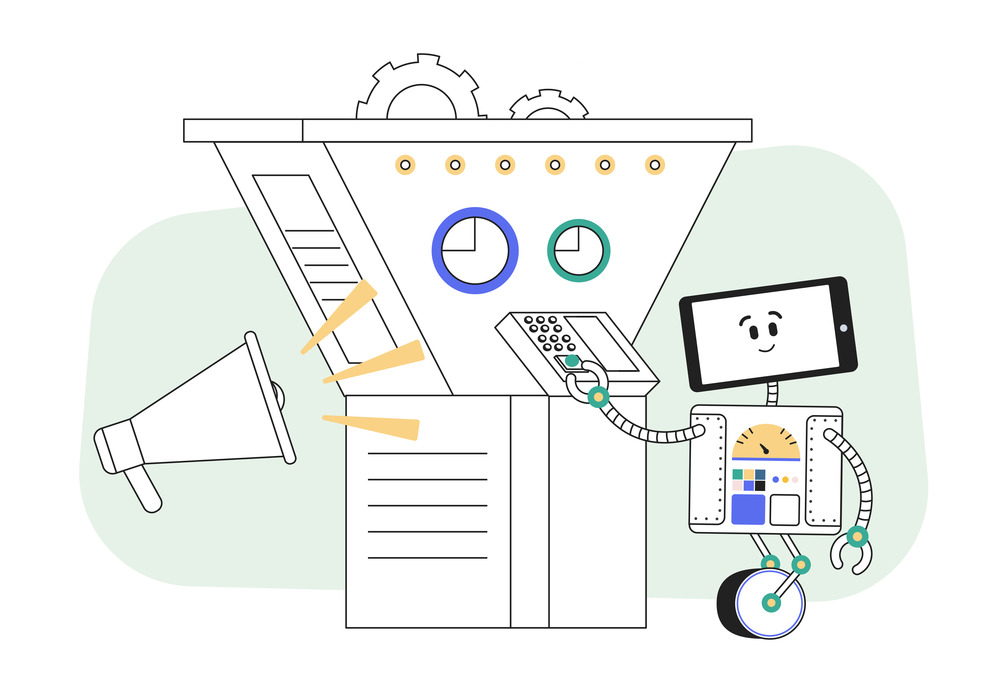You hear artificial intelligence and you think of robots, self-driving cars and factories that run themselves. In fact, AI is everywhere. It powers the things you interact with on a daily basis, such as Netflix, Google and social media platforms. Whether you find that creepy or cool, it will only become more ingrained in our world.
As digital marketers, we want to let you know how AI is changing the face of marketing. And, as a B-Corp organisation we commit to using AI ethically and in a manner that helps our clients.
Here are some of our favourite developments:
1. Personalised content recommendations
Netflix is known for their ‘collaborative filtering’, which offers recommendations to their customers. The concept of helping clients to narrow down their choice in a ‘smart manner’ is a tool that many companies have since adopted. Amazon have been using AI since 1998 and more recently, Sky has implemented a machine learning model. This new development recommends content according to the viewer’s mood.
As Lori Goldberg writes in a brief history of artificial intelligence in advertising for Econsultancy, ‘this all comes from AI-based clustering and interpreting of consumer data paired with profile information and demographics. These AI-based systems continually adapt to your likes and dislikes and react with new recommendations tailored in real-time.’
This kind of technology could be used by marketers for recommending digital content on B2B websites, ensuring site visitors stick around for more information with tailored options.
2. Integrating insight-as-a-service for advertising
According to a recent study, 78 percent of senior executives are looking to integrate artificial intelligence into their operations within the next 12 months.
Today, Amazon estimates 35 percent of its revenue is generated by its recommendation engine. AI is at the heart of what makes ‘Alexa’ run, but Amazon also uses these interactions to analyse customer data. This includes the questions that a user asks, the content a user plays and the items a user asks Alexa to buy. These all build a profile that Amazon uses to predict what the person will want next.
Machine learning is a tool for aggregating data across different tools and software and using it as a basis for developing algorithms. As the algorithms become more sophisticated, businesses can use this data to target potential clients by customising digital ad campaigns based on their digital footprint and buying history.
Google has gone one step further to focus on the ‘micro-moments’ with audiences. Because of smartphones and on-demand information advertisers are now struggling to target their audience at the most relevant and critical times of the day. Google have categorised these micro-moments to enable advertisers to target their audience at a precise moment to capitalise on a purchase. These micro-moments are:
- I want to know moments
- I want to go moments
- I want to do moments
- I want to buy moments
This type of advertising wouldn’t be possible without using automation. PPC advertising uses Google’s audiences to understand who is searching for specific categories of products and targets them with the relevant adverts. Predictive advertising takes all of this one step further by helping you anticipate your customer needs before strong purchasing intent is clear.
An exciting test case of this is the partnership between Nike and UberMedia (mobile advertising specialists). UberMedia developed a campaign promoting NBA star Carmelo Anthony’s new shoe. The campaign targeted users who followed the New York Knicks and/or the individual player accounts on Twitter. As well as this, they also targeted smartphone users whose phones were tracked by GPS on tennis courts, running trails or hiking trails within the last 30 days. And in even more ‘Big Brother’ weirdness, whenever a user was outside a Nike or FootLooker store in Manhattan an ad would appear on their phone showing them the nearest location to purchase a pair of Carmelo’s shoes. We’re kind of impressed (and a bit afraid).
3. Content creation
This is where we do ourselves out of a job… AI and machine learning can be used to create content. Recently, people have developed tools that could be applied to craft unique marketing content, like blogs – albeit at a primitive level.
Ryan Kiros from the University of Toronto published a project on GitHub called a neural storyteller.
Can AI create art? Well, it’s probably not going to win any literary awards, but the idea that an AI machine could be ‘fed’ hundreds of thousands (if not millions) of romantic novels and create a unique piece of romance literature is an interesting prospect for the future. Here’s a short snippet to give you an idea of the level we’ve reached at the time of writing (you can see the other experiments here): We’re fairly sure our jobs are safe for the moment, but content written by algorithm could find some future applications in the B2B marketing world.
We’re fairly sure our jobs are safe for the moment, but content written by algorithm could find some future applications in the B2B marketing world.
4. Chatbots have the answers
Chatbots are handy automated tools that interact with clients and customers. At the moment, they’re able to answer basic questions, share relevant material like ebooks or blogs, and even process and fulfil orders.The best thing about chatbots is that they’re accessible to small and large companies alike. And, they’re easier to integrate than ever before.
Facebook is incorporating chatbots into its messenger app, making it easier for customers to message and engage with business pages. In fact, Facebook has instigated a programme called wit.ai bot so that businesses have easy access to these ‘bots.’
Automation for the nation
Quite often, marketing begins as ‘guesswork.’ So, a clever, creative bod comes up with an idea or new concept and it’s up to the team to implement it. We constantly test, adjust and experiment in the hope that we will get to a more profitable end. Machine learning and AI is being used to understand buyer behaviour and decision making. The more it understands the more it can adapt.
Over the next few years, we’ll see this technology enable marketers to use tools with ‘built-in’ decision-making that learn as they go, making marketing work more data-driven, efficient and personalised. Basically, we’re going the Batman route to getting our superpowers.
Whilst we are looking forward to flying cars, robot servants and perhaps mind-reading TV programmes, we can't help but be excited about the prospects for digital marketing. AI will have a positive impact on productivity and will empower businesses to cut through the noise, reaching the leads who will actually become paying customers.




 We’re fairly sure our jobs are safe for the moment, but content written by algorithm could find some future applications in the B2B marketing world.
We’re fairly sure our jobs are safe for the moment, but content written by algorithm could find some future applications in the B2B marketing world.